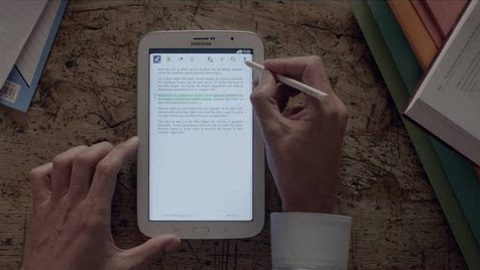
As originally posted to www.ditcentral.com
I’ve recently finished a shoot for a pilot TV show with this camera following another job I did backing up F55 cards after a shoot. I’ve also had a bit of testing time with the camera so I’m in a pretty good position to comment on it’s general abilities, little intricacies and foibles. Bear in mind that a lot of this will apply to the F5 as well, but as I haven’t used that camera I’m keeping this specific to the F55…
General things and shooting to SxS
I’m going to deal with shooting internally to the SxS Pro+ cards to start, I would expect that the majority of productions using this camera will work this way.
You can currently shoot in 3 modes internally to SxS Pro+ cards:
XDCAM HD (1920×1080), 10 bit, 50Mbps at 4:2:2, max 60fps (180fps in future update)
XAVC HD (1920×1080), 10 bit, 100Mbps at 4:2:2, max 60fps (180fps in future update)
XAVC 4K (4096×2160), 10 bit, 300Mbps at 4:2:2, max 60fps (no future increase planned)
You change the recording format under System > Rec Format. 2K will be added later this year. Colour sampling can be set to YPbPr which gives you 4:2:2, or set to RGB that gives you 4:4:4 for the HD options only. RGB is not available for 4K. If you’re on 4K and you set it to RGB, it will automatically shift down to HD without giving you a notification so be careful, that one almost caught me out. This setting is changed under System > Base Setting > Main Operation.
Also under System > Base Setting is the Color Space option. To get the most of the latitude from S-Log2 gamma, you need to change this from Normal to S-Gamut. Bear in mind that doing this gives you limited colour temperate options of 3200, 4300 and 5500K.
Under System > System Setting, you have the Frequency option. This is Sony’s strange name for Base FPS. All the usual TV standards are listed here.
Interestingly, it seems that you can only under or over crank while on the XAVC HD option. In all other modes, the S&Q (Slow & Quick) function is greyed out on the side of the camera. So in order to shoot higher frame rates in XDCAM HD or XAVC 4K, you’d have to do that via Frequency.
On the topic of Gamma settings, most of the time you’re always probably going to have it set to S-Log2 which is Sony’s version of Log-C on the Alexa and C-Log on the Canons. This will give you the most dynamic range. However, if you were shooting outside of S-Log2, in cases where there was minimal or no grade to be performed, you have some different options. These are a bit confusing but the key Rec709 LUT is highlighted below, all the others are creative choice:
STD (Standard Gamma):
STD1 DVW / STD2 ×4.5 / STD3 ×3.5 / STD4 240M
STD5 Rec709 / STD6 ×5.0
HG (Hyper Gamma):
HG1 3250G36 / HG2 4600G30 / HG3 3259G40 / HG4 4609G33
HG7 8009G40 / HG8 8009G33
There’s a good article on the details for some of the gamma settings over at AbelCine.
Here’s a key one, when using SxS, there’s no way to record S-Log2 internally to the camera but send a Rec709 signal out to an external monitor as you can do on the Alexa and therefore falls into the same trap as the C300 on this one. One of the bigger failings at the moment as far as I’m concerned. You could always get a LUT box set up between the camera and the monitor or use something like Pomfort Livegrade with a Blackmagic HD Link to adjust the output. I hope it’s something they update in a later firmware though. RAW recording is different. It doesn’t matter if you use Rec709 here because the look is just metadata.
Also on the subject of monitoring, Mon Out 1 is an HD signal with menu overlays, Mon Out 3 is a clean HD feed you can use for directors/checks monitors. I believe you would use all four BNC connectors for outputting a full 4K signal.
Another seemingly large oversight, there is no proper metering on the camera, it’s zebra stripes and that is it. No histogram, waveform, RGB parade, anything. So make sure you get an on board monitor with those capabilities if needed.
Regarding media, it’s a bit WTF. The camera doesn’t format the mags with reel names. Formatting in the camera just names the card ‘Untitled’. Also, clip names are just called ‘Clip0001’, ‘Clip0002’, ‘Clip0003′ etc. No other unique identifiers in the filenames or folders at all. The only random part seems to be the UID in the metadata which is a very long alphanumeric string which seems quite un-useful. This definitely needs to be improved and is another one of those things I hope they change soon in an upcoming firmware release. The camera formats the cards in the ExFAT format and offloading is identical to any other SxS workflow, I didn’t need any extra drivers to read SxS Pro+ cards that I hadn’t already installed for normal SxS cards.
When shooting SxS, you should expect to get about half an hour of footage on a 64Gb card and about an hour on 128Gb cards.
One very useful feature is the ability to simultaneously record 4K XAVC and XDCAM HD to one SxS card. You enable this under Setting > MPEG2 Proxy. You’ll find the XDCAM clips in the XDCAM > Sub folder of your mag. Be aware though that it appends the numerals ’02’ to the end of each clip on the XDCAM versions. If you were going to use these as offline edit files or use these to transcode from, editorial may well have problems conforming back to the 4K XAVC files unless these are renamed. I found this feature very useful as I only had access to an older laptop on my shoot which was struggling to play back full resolution 4K files, I could however easily use the XDCAM HD clips to QC and review footage in FCP7 after importing them with the XDCAM Transfer program from Sony. Be aware that using this option will of course slightly reduce your available recording time per mag as it’s generating more data.
Sony do a new, bus powered USB 3.0 SxS card reader (model SBAC-US20). About bloody time. If you don’t have an ExpressCard slot or Thunderbolt to ExpressCard adapter, request this in the camera hire kit, all F55’s ship with one.
Shooting RAW:
To shoot RAW, you need the AXS-R5 module that fits between the camera and the battery mount. It takes new AXS solid state media of which I believe there are only 512Gb versions at the moment. It’s 16-bit ‘Compressed RAW’, working out to a compression ratio of about 2.7:1. You cannot currently change the compression ratio. Max frame rate with the AXS-R5 I believe is 60fps and this is not expected to increase with future updates.
You should expect to get about an hour of footage on a 512Gb card.
With the AXS-R5 attached, you then have the option of putting the camera in Cine El mode which is under System > Base Setting > Shooting Mode, indeed, you have to change to this mode to shoot RAW. This locks the gamma to SLog-2, the ISO to 1250 and the colour space to S-Gamut (EDIT: The latest firmware v1.13 now gives you access to ISO settings of 400, 640, 800 and 1250). If you’re doing simultaneous recording to RAW and XDCAM or XAVC, remember to make sure that System > AXS Recorder > Clip Name is set to ‘Link’ or else when they come to re-conform from offline to online in post, the filenames won’t match. Also, if for some reason you need to offload to FAT32 formatted drives, make sure System > AXS Recorder > Chunk is set to 4Gb or less.
As per the ‘Shooting to SxS’ notes above, at the same time as shooting RAW, you can also simultaneously record XDCAM HD and even 4K and HD XAVC to the internal SxS cards. This is under Setting > Rec Control (> SxS & AXS). Then you set your internal recording format as you normally do. The advantage here could be recording and monitoring in Rec709 internally, while the AXS recorder captures RAW where the ‘look’ is just metadata.
I’ve read reports of the RAW footage being a bit overexposed compared the simultaneously recorded XAVC or XDCAM and light meter results. This should definitely be something to be aware of when it comes to QC but I haven’t been on a shoot with the AXS-R5 recording RAW yet so this is just what I’ve heard.
The AXS media is offloaded with an externally powered, USB 3.0 card reader, model AXS-CR1. AXS media is also formatted in the ExFAT format and should not need a driver. You might however want to download the AXSM Drive Utility from Sony which allows to you check the status of the drive, format media, save AXS-R5 firmware onto media and retrieve log data, it’s available here (registration required):
http://www.sony.co.uk/pro/support/software/SET_BPE-SS-1029/10
Other things to note and little issues:
Regarding 4K, just bear in mind that 4K on this camera has a recorded resolution of 4096×2160 which has an aspect ratio of 17:9. Therefore, if there’s a potential delivery to HD, the DoP may well want 16×9 frame guides. HD and other frame guides are found under the VF panel in the menu. Bear in mind that you can set either frame guides or look around, not both at the same time. Again, I hope they offer the option of both at some point.
On a related note, the camera does not record ‘true’ 4K in terms of ‘1 pixel to 1 photosite’ resolution. The camera has a 4K sensor and light travels through a bayer pattern filter to get to it. This always reduces resolution, usually in the range of about 15%. Therefore it’s really probably more like 3.5K upscaled to 4K. This would be different from the F65 for example which has an 8K sensor that also uses a bayer pattern sensor, but then down-samples to 4K, giving you a true 4K image. Worth just bearing in mind.
Timecode jamming was very straightforward. There is a dedicated BNC, I set the camera to Free Run and the soundo plugged up and it jammed no problem.
The Focus Puller I was working with, the talented and all round nice guy Jason Oxley, brought up a couple of issues that are worth noting. One was that the camera sometimes wouldn’t format cards, saying ‘Unrecognised Media’. You need to eject the card and come all the out of the menu system, then put the card back in before trying the format again. The second time has always worked so far. A bug that I’m sure will be worked out.
We had a chat about the general usability of the camera. From the Focus Puller and Assistants point of view, there were a few things he noted as well. There’s a distinct lack of mounting points unless you have an aftermarket cheese plate. The direct access control screen for modifying key things like White Balance, S&Q, ISO and others is on the operators side, not the assistants side, which makes things tricky. Neither can you set the user programmable buttons to format the cards. It’s also very easy to knock some of the buttons, especially in hand-held mode. The built in ND wheel, if off it’s mark by a touch, can introduce an ND grad effect which is easy to miss. Not good.
I had my first job with F55 and F5 footage a few weeks ago. On that job the camera operator had accidentally knocked the on-off switch while doing a hand-held shot. I was asked to backup the media the day after and noticed that Sony Content Browser could not open the file, reporting it as damaged. I advised the production company to get the mag put back in a camera and see if it was playable, still waiting to hear the result on that one. So bear in mind that losing power during a take could make retrieving that footage a major pain in the ass.
Software:
Firmware: Make sure that the camera is on the latest firmware, version 1.13 as there is an issue regarding “black edges on highlights” in versions previous to 1.03:
http://nofilmschool.com/2013/03/sony-f5-f55-firmware-fix-shipping-bhphoto/
Version 1.13 also gives you more ISO options in RAW, previous versions were locked to 1250.
Programs to open XAVC and RAW F55/F5 footage are increasing but still a bit thin on the ground at the moment. Assimilate Scratch is one of the few dailies generation programs that can now handle both XAVC and Sony RAW in the latest update. Final Cut X now supports XAVC in 10.0.8, as does DaVinci Resolve in V9.1.
In lieu of those programs, there’s the Sony Content Browser for XDCAM and XAVC which is available here:
http://www.sonycreativesoftware.com/contentbrowser
You need a serial number to install it. Previously to just recently, Sony wanted $199 for the program, you got 1 free serial with each camera, which I frankly think was ludicrous (Content Browser v1 was always free). Luckily they had a change of heart and bowed to pressure so you can now register for one free serial ‘per person’ by following the link to register on the page above.
The RAW viewer is free and available at the link here (registration required):
http://www.sony.co.uk/pro/support/software/SET_BPE-SS-1028/1
Conclusions:
As a digital cinema camera, the F55 does the job and in my humble opinion, produces a very pleasing image that’s not altogether dissimilar to the RED EPIC. The XAVC codec is very efficient for the information it squeezes in, the Sony engineers have done a great job here. Also, the RAW implementation is good, true 16 bit RAW will be phenomenal when it comes to possibilities in post. At 512Gb an hour though, you need to make sure your offload workflow is fast. Operationally, it’s very early days in terms of it’s firmware and design-wise there’s some decisions that just leave you scratching your head. While there’s a lot that’s been implemented in the early firmware versions, more so than some competing cameras in it’s category upon their release (I’m looking at you EPIC and Alexa), those cameras have now had years of development. The F55 has got a bit of catching up to do.
You can see a roadmap for the camera upgrades here…
http://community.sony.com/t5/F5-F55/Firmware-Timeline/td-p/73273
… and the user manual here:
http://community.sony.com/sony/attachments/sony/large-sensor-camera-F5-F55/981/1/F5_F55.pdf







One Response to “The Sony F55: Things you need to know”
I just did a shoot with the F55 and found this article on ditcentral.com Thank you for writing it up, it was very helpful!